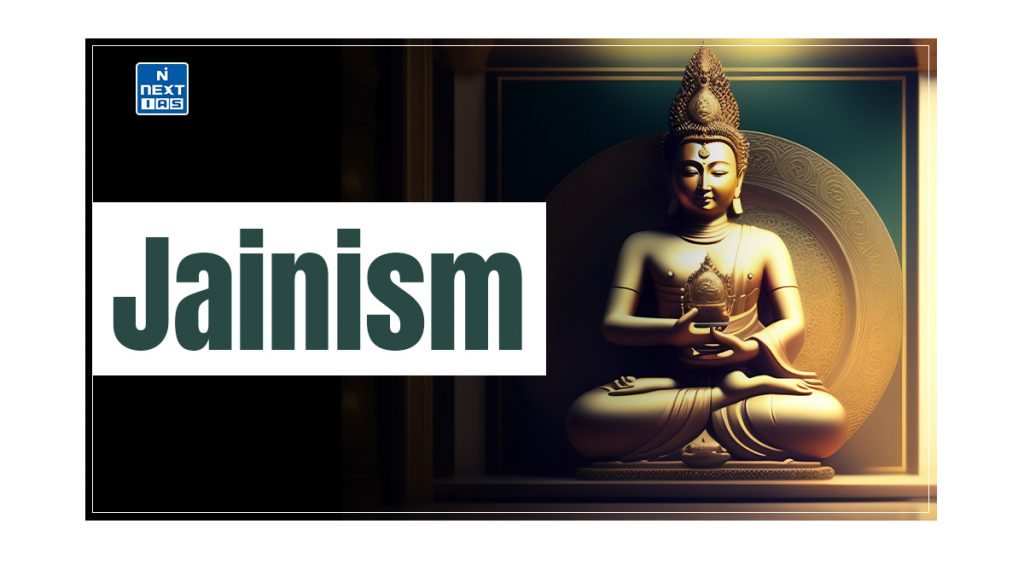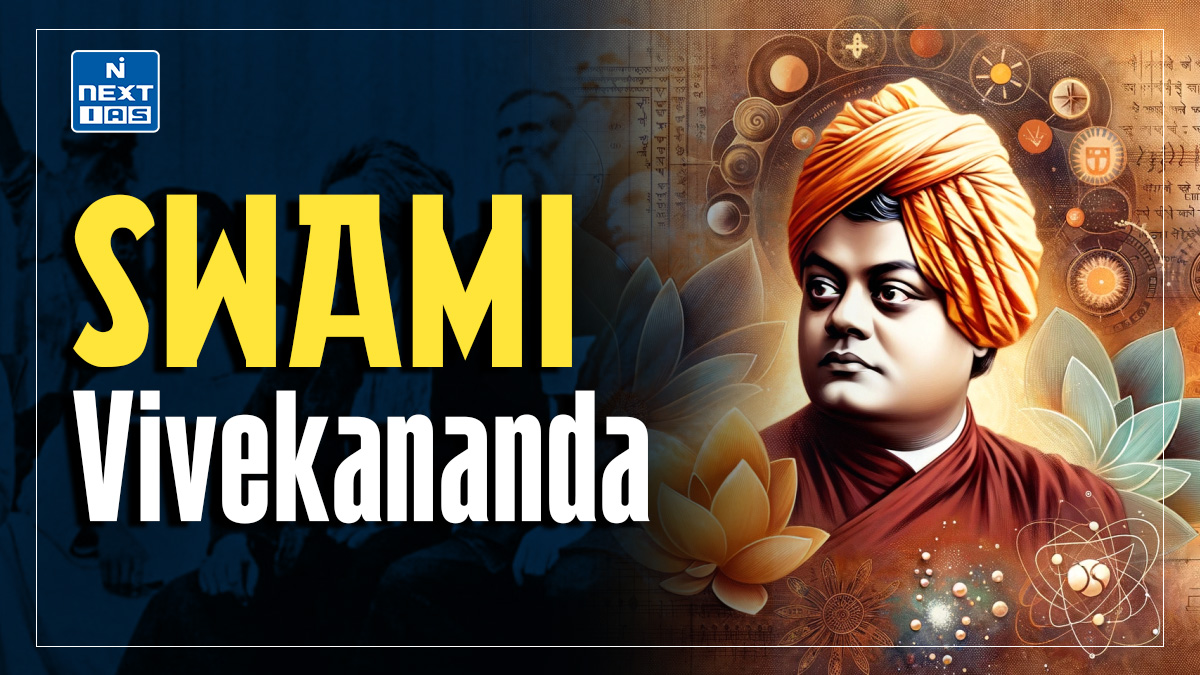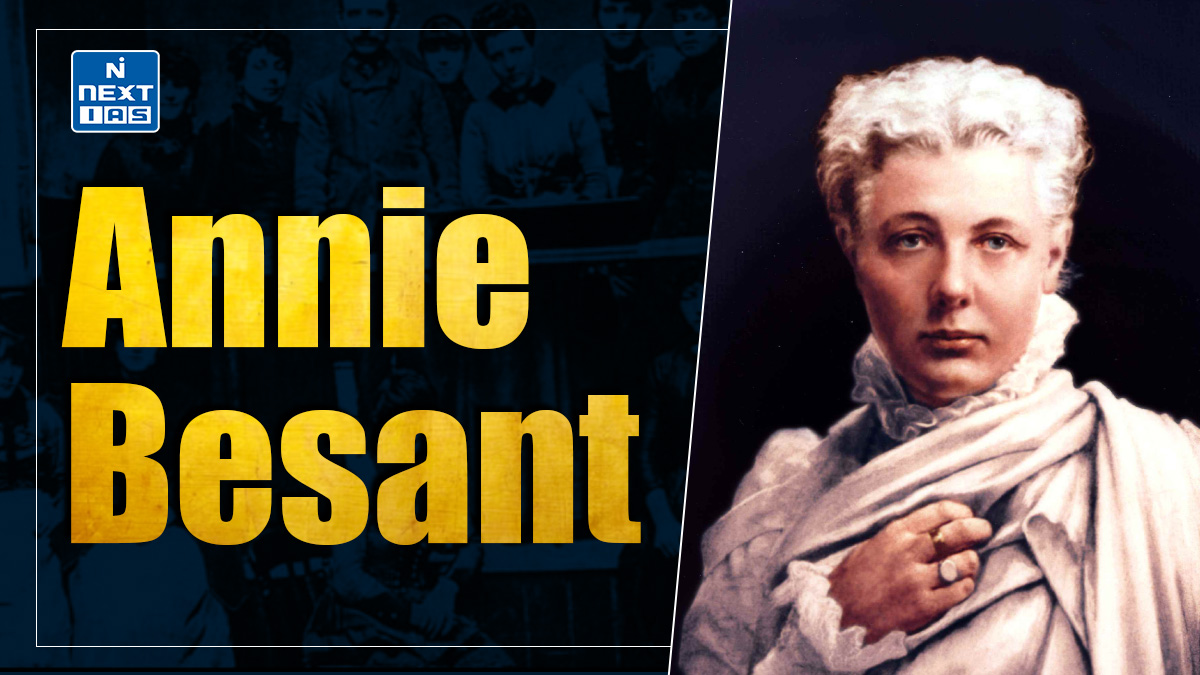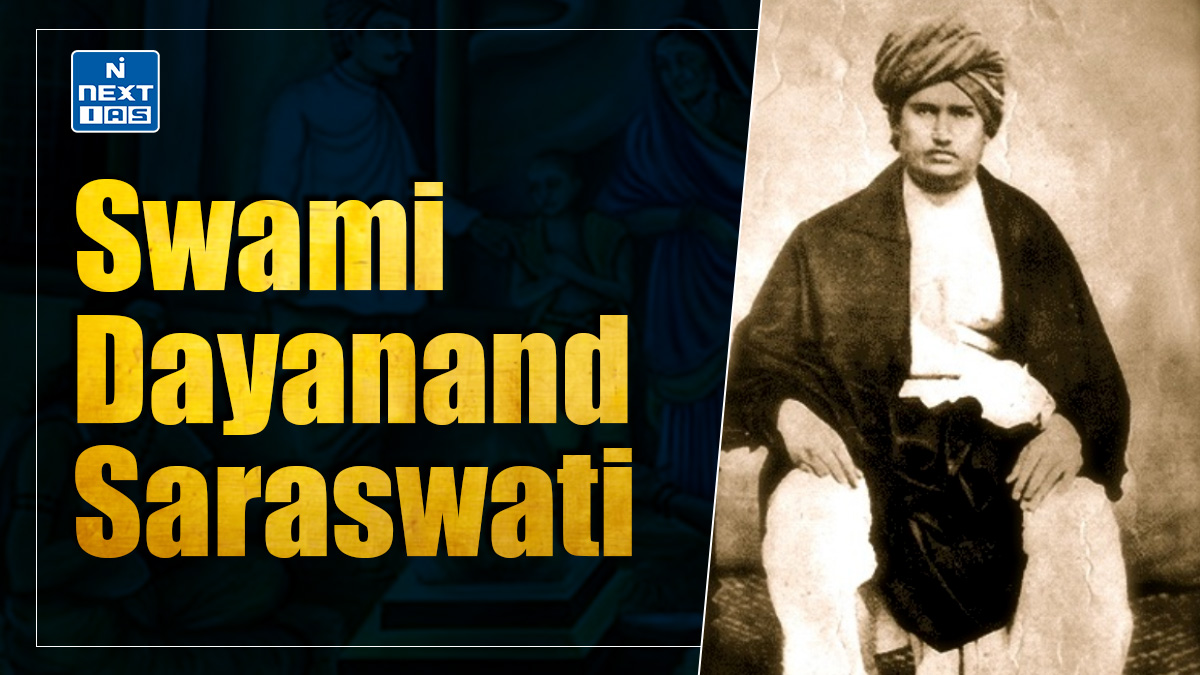
Jainism in India is one of the ancient religions that emphasizes non-violence, truth, and asceticism as the path to spiritual liberation. Its significance lies in its profound impact on Indian culture, philosophy, and ethical practices, influencing various aspects of life, including art, architecture, and trade. This article aims to study in detail the Jainism, including its origin, spread, doctrines & teachings, sects, its contributions to Indian society and other related concepts.
About Jainism
- Jainism, one of the world’s oldest religions, originated in India around the 6th century BCE, with roots tracing back even earlier.
- Founded by Vardhamana Mahavira, the 24th Tirthankara, it emphasizes nonviolence (ahimsa), asceticism, and self-discipline as means to spiritual liberation.
- Central to Jain philosophy is the belief in the soul’s eternal nature and the importance of karma in shaping one’s destiny.
- Its rigorous ethical code, its emphasis on non-violence in thought, word, and deed, and its strict asceticism have profoundly influenced Indian culture and spirituality.
Jain Tirthankaras
- According to Jain tradition, there were 24 Tirthankaras (literally ford makers, across the stream of existence), the first being Rishabhadeva/Adinatha and the last being Mahavira.
- The names of two Jain Tirthankaras – Rishabha and Arishtanemi – are found in the Rig Veda.
| S. No. | Name | Symbol |
|---|---|---|
| 1. | Rishabha | Bull |
| 2. | Ajitnath | Elephant |
| 3. | Sambhavanath | Horse |
| 4. | Abhinandannath | Monkey |
| 5. | Sumatinath | Curlew |
| 6. | Padmaprabhu | Red Lotus |
| 7. | Suparswanath | Swastik |
| 8. | Chandraji Prabhu | Moon |
| 9. | Suvidhinath | Crocodile |
| 10. | Shitalnath | Srivatsa |
| 11. | Shreyanasanath | Rhinoceros |
| 12. | Vasupujya | Buffalo |
| 13. | Vimalnath | Boar |
| 14. | Anantnath | Falcon |
| 15. | Dharmanath | Vajra |
| 16. | Shantinath | Deer |
| 17. | Kuntunath | He – Goat |
| 18. | Arnath | Fish |
| 19. | Mallinath | Water pot |
| 20. | Muniswasth | Tortoise |
| 21. | Neminath | Blue Lotus |
| 22. | Arishtanemi | Conch Shell |
| 23. | Parshwanath | Serpent |
| 24. | Mahavira | Lion |
1st Tirthankar (Rishabha)
- Symbol: Bull
- Born: Ayodhya
- Moksha: Mount Kailash
- Spouse: Sunanda and Sumangala
- Parents: Nabhi (father); Marudevi (mother)
23rd Tirthankar (Parshwanath)
- Symbol: Serpent
- Born: 9th – 7th century (Varanasi)
- Died: 8th or 7th century (Shikharji); Parshwanath (Parasnath) hill, Giridih, Jharkhand.
- Spouse: Prabhavati or Never married.
- Parents: Ashvasena (father); Vamadevi (mother)
- His four central teachings (Chaturthi) were:
- Ahimsa (non-injury)
- Satya (non-lying)
- Asteya (non-stealing)
- Aparigraha (non-possession)
- Mahavira adopted all these four teachings and added one more which is Brahmacharya (chastity), to it.
24thTirthankar (Vardhamana Mahavira)
- Symbol: Lion
- Born: 540 BC in Kundgrama near Vaishali (Bihar)
- Died: Pavapuri, Bihar; 468 BC
- Spouse: Yashoda
- Parents: Siddhartha (father; head of Jnathrika Kshatriya clan); Trishala (mother)
- He married Yashoda (daughter of Samarvira king) and had a daughter, Priyadarsena, whose husband Jamali became his first disciple.
- At the age of 30, after his father’s death, he renounced his family, became an ascetic and set out in a quest for truth.
- He was accompanied by Makkhali Gosala, but later, due to some differences, Gosala left him and founded the Ajivika sect.
- At the age of 42, under a sal tree at Jambhikagrama on the bank of the river Rijupalika, Mahavira attained Kaivalya, or supreme knowledge.
- Through Kaivalya, he conquered misery and happiness.
- From now onwards, he was called Mahavira (the brave), Jitendriya (one who conquered his senses), Kevalin (perfect learned), Nigantha (free from all bonds), and Arihant (blessed one), and his followers were named Jain.
- He delivered his first sermon at Pava to his disciples, known as Gandgharas, and founded a Jain Sangha there.
Teachings of Vardhamana Mahavira
- Belief in God: He rejected the authority of Vedas and did not believe in the existence of God. He denied the power of the almighty as the creator.
- Ahimsa: He believed every object possesses a soul, so he professed strict non-violence. Because of this, many of the Jains walk on foot, filter water before drinking and even tie a band of cloth around their mouth so they may not kill small insects.
- Attainment of Salvation: He stressed the attainment of salvation by believing in penance and dying of starvation. Salvation can be achieved by following the three Jewels or Triratna, i.e., right faith, right knowledge, and right conduct.
- No Faith in Caste System: He focused on universal brotherhood and equality and non-belief in the caste system.
- Karma: He believed in karma and the transmigration of the soul.
| Note: – According to Mahavira, a person is born in a high or in a lower Varna as a consequence of the sins or the virtues acquired by him in the previous birth. – Mahavira looks for human values even in a Chandala. In his opinion, members of the lower castes can attain liberation through pure and meritorious life. |
Doctrines of Jainism
The five doctrines of Jainism are:
- Do not commit violence (Ahimsa)
- Don’t speak a lie (Satya)
- Don’t steal (Asteya)
- Don’t acquire property (Aparigraha)
- Observe continence (Brahmacharya)
| Note: – Jainism attached the utmost importance to ahimsa or non-injury to living beings. – It acknowledged the existence of the gods but placed them lower than the Jina. – It didn’t condemn the Varna system as Buddhism did. – It forbade its followers from engaging in war and even agriculture, as both practices involve the harm or killing of living beings. a. Hence, they confined themselves to trade and merchants’ activities. – It primarily aims at the attainment of freedom from worldly bonds. No ritual is required for such liberation. |
Triratnas of Jainism
The three jewels, or triratnas of Jainism, are the core principles guiding a follower towards spiritual liberation (moksha):
- Right Knowledge (Samyak Jnana): This involves having a true understanding of the nature of reality, the self, and the universe.
- It means recognising the fundamental truths about the soul, karma, and the cycle of birth and rebirth.
- Right Faith (Samyak Darshana): Right faith refers to a deep belief in and trust in Jainism’s teachings.
- It involves a clear, unwavering conviction in the principles of truth and the path laid out by the Tirthankaras.
- Right Conduct (Samyak Charitra): This is about ethical discipline and moral purity.
- It includes following the five vows (ahimsa, or nonviolence; satya, or truthfulness; asteya, or nonstealing; brahmacharya, or chastity; and aparigraha, or nonattachment) to purify the soul and reduce karmic bondage.
Two Sects of Jainism
- Shvetambaras are those who put on white dress, and Digambaras are those who keep themselves naked.
| Differences | Shvetambaras and Digambaras |
| Practice of Nudity | Digambaras stress the practice of nudity as an absolute pre-requisite to the mendicant’s path and to the attainment of salvation. However, the Shvetambaras assert that the practice of complete nudity is not essential to attain liberation. |
| Liberation of Women | Digambaras believe that a woman lacks the adamantine body and rigid will, which are necessary to attain moksha. Shvetambaras, on the other hand, hold the contrary view and maintain that women are capable in the present lifetime |
| Food for Omniscient | According to the Digambaras, once a saint becomes a kevlar or Jnana, that is, omniscient, he needs no morsel of food. But the Shvetambaras do not accept this view. |
| Charitras and Puranas | The Shvetambaras use the term ‘Charitra’, and the Digambaras use the term ‘Purana’ for the biographies of great teachers. |
| Canonical Literature | The Shvetambaras believe in the validity and sacredness of canonical literature i.e. the twelve Angas and sutras, as they exist now. The Digambaras, on the other hand, hold that the original texts were lost long ago. The Digambaras also refuse to accept the achievements of the first council, which was convened under the leadership of Acharya Sthulabhadra, and consequently, the recasting of the Angas. |
Main Followers of Jainism
- Bimbisara (c. 558–491 BCE), Ajatshatru (c. 492–460 BCE), and Udayin (c. 460-440 BCE) of the Haryanka dynasty as a patron.
- In south India, the Ganga dynasty, Kadamba dynasty, Amoghavarsha (Rashtrakuta dynasty).
- Karnataka (Chandragupta Maurya).
Jain Councils
| Councils | 1st Jain Council (300 BC) | 2nd Jain Council (512 AD) |
| Location | Pataliputra | Vallabhi |
| Chairman | Sthulabhadra | Devridhigani Kshmasramana |
| Royal Patron | Chandragupta Maurya | – |
| Outcomes | Compilation of 12 Angas to replace 14 Purvas | Final compilation of 12 Angas and 12 Upangas |
Jain Literature
- The sacred literature of Jain was written in the Ardhamagadhi form of Prakrit.
- These texts were finally compiled in the sixth century A.D. in Gujarat at Valabhi, a great centre of education.
- The Jainas’ adoption of Prakrit helped the growth of this language and its literature: 12 Angas, 12 Upangas, 10 Parikarnas, 6 Chehedasutras, 4 Mulasutras, and 2 Sutra Granthas.
- Purvas/Parvas are part of 12 Angas and the oldest test of Mahavira’s preachings.
- Kalpasutra (Sanskrit) by Bhadrabahu contains the biographies of the Jain Tirthankaras, most notably Parshvanath and Mahavira, including the latter’s Nirvana.
- Bhadrabahu Charita by Ratnanandi of about 1450 A.D.
- Parishishta Parvan (an appendix of Trishashtishalaka Purush) by Hemchandra.
Spread of Jainism
- Unlike Buddhism, Jainism was confined mainly to India. It spread into south and west India, where the Brahmanical religion was weak.
- According to a late tradition, Chandragupta Maurya (322-298 B.C.) is credited with spreading it in Karnataka.
- It is said that 200 years after Mahavira’s death, a great famine took place in Magadha, which lasted for twelve years.
- In order to protect themselves from the famine, many Jaina went to the south under the leadership of Bhadrabahu, but the rest stayed back in Magadha under the leadership of Sthalabahu.
- Jainism spread to Kalinga in Orissa in the 4th century B.C.
- In the first century B.C., it enjoyed the patronage of the Kalinga king Kharavela, who had defeated the princes of Magadha and Andhra.
- In the second and first centuries B.C., it also has reached the southern districts of Tamil Nadu.
- In later centuries, it penetrated Malwa, Rajasthan, and Gujarat.
- Even now, these areas have a large number of Jainas who are mainly engaged in trade and commerce.
Contributions of Jainism to Indian Languages
- Many regional languages emerged and developed out of Prakrit languages, particularly Shauraseni, which grew the Marathi language.
- The Jainas composed the earliest essential works in Apabhramsha and prepared its first grammar.
- A large portion of Jaina writing is still in manuscript form, which has not been published and is found in the Jaina shrines of Rajasthan and Gujarat.
- During early medieval period, the Jainas also made good use of Sanskrit and wrote many Sanskrit texts.
- They also contributed to the growth of Kannada, and they wrote extensively about it.
Jain Architecture
Jaina art in ancient times is not as rich as Buddhist art, but Jainism contributed substantially to art and architecture in medieval times. A few examples are listed below:
- Caves or Gumphas: Hathigumpha, Baghagumpha, etc. Udaygiri (Bhubaneswar) and Khandagiri (Orissa), Kharavela.
- Temples: Nearly 90 percent of Jaina temples are the gifts of single wealthy individuals.
- They are distinguished for their elaborate details and exquisite finishes.
- Dilwara temples: Vimalavasahi temple, Tejapala Temple—Mount Abu (Rajasthan), Girnar and Palitana (Gujarat), Pavapuri temple, and Rajagriha temple (Bihar).
- Statute of Gometeshwar/Bahubali: Shravanbelgola (Karnataka)
- Jain Tower: The Jain Tower within the fort of Chittor is another remarkable example of architectural engineering.
- Numerous palm leaf manuscripts were inscribed, some even adorned with gold dust.
- This tradition led to a new artistic style known as the “Western Indian School” of painting.
Contribution to Trade of Janisim
- Jainism prohibited the practice of war and even agriculture on its followers because both involved the killing of living beings.
- Hence, they confined themselves to trade and merchant’ activities.
- The profits generated through trade enabled them to function as bankers, money changers, etc.
- The profits were again ploughed back into commercial pursuits, contributing to their material prosperity and economic and political clout.
- The Jains have been famous traders since ancient times. In medieval times, they persisted in the profession and prospered. Jagdu of Gujarat was the most renowned Jain trader of the thirteenth century in Gujarat.
- The Jains, like other Indian traders, profited from this expansion of trading activities. This explains their strong presence in Agra, the entire point of north Indian trade. Besides, they were well-represented in two other important trade marts of north India: Lahore and Multan.
- They became money lenders, advancing huge sums to traders, rulers, and officers of the state.
- Since European trading companies in the seventeenth century were generally short of liquid capital, they turned to Indian money-lenders, among them the Jains, to finance their purchases on Indian soil.
- This brought additional profits to Jains and other Indian merchants.
Causes of Limited Spread of Jainism
- The five principles of Jainism were responsible for its limited spread due to their hardships.
- Jainism preached strict rules and stringent methods of life. Most of the time is inadaptable worldwide.
- It never propagated with a missionary zeal.
- Jainas concepts of vegetarianism and non-violence were among one of the factors to its limited spread.
- In Jainism, even the cultivation of crops is considered as violence. So, Jains could not practise agriculture.
- Obviously, Jainism was less popular in ancient agrarian societies and in India, where huge masses were associated with agriculture.
Causes of Decline of Jainism
- Lack of royal patronage: Great rulers like Bimbisara, Ajatshatru, Udayin, and Kharavela extended royal patronage to Jainism.
- But later, due to Buddhism rulers like Asoka, Kanishka, and Harsavardhan, who had embraced Buddhism, Jainism was outshadowed.
- Lack of efforts: Jain followers were not enthusiastic about spreading the religion in villages and towns.
- Severity of Jainism: The Jains practised rigorous asceticism and self-mortification, which was disliked by the people, and they alienated themselves from it.
- Factionalism in Jainism: The followers of Bhadrabahu advocated following the teachings of Mahavira, while the followers of Sthulabhadra wanted to tone down the severity of Jainism, which led to a division among the Jainas.
- Unintelligible Philosophy: The concepts of Jeeva, Ajeeva, Pudgala, Syadbala, etc., could not be understood properly by the people.
- Many could not accept the view that earth, water, stone, or tree had a soul of their own.
- Spread of Buddhism: Buddha was opposed to extreme hardship and prescribed a ‘middle path,’ which simplified Buddhism.
Conclusion
Jainism, with its profound emphasis on non-violence, self-discipline, and the pursuit of spiritual liberation, has significantly shaped the religious and cultural landscapes of India. Despite its rigorous principles and limited spread beyond the subcontinent, Jainism has left an indelible mark on Indian philosophy, art, architecture, and trade. Its influence continues to resonate through its contributions to language, literature, and ethical practices. While Jainism may not have achieved widespread global prominence, its enduring legacy within India stands as a testament to its spiritual and cultural significance.
FAQs
Who was the founder of Jainism?
It is belived to be founded by Vardhamana Mahavira, the 24th Tirthankara.
What were the main teachings of the Mahavira?
The main teachings of Mahavira are centered around the principles of non-violence, truth, and renunciation.
What are the causes of Limited Spread of Jainism?
The strict rules and stringent methods of life preached by Jainism is considered to be main reasons for its limited spread.






